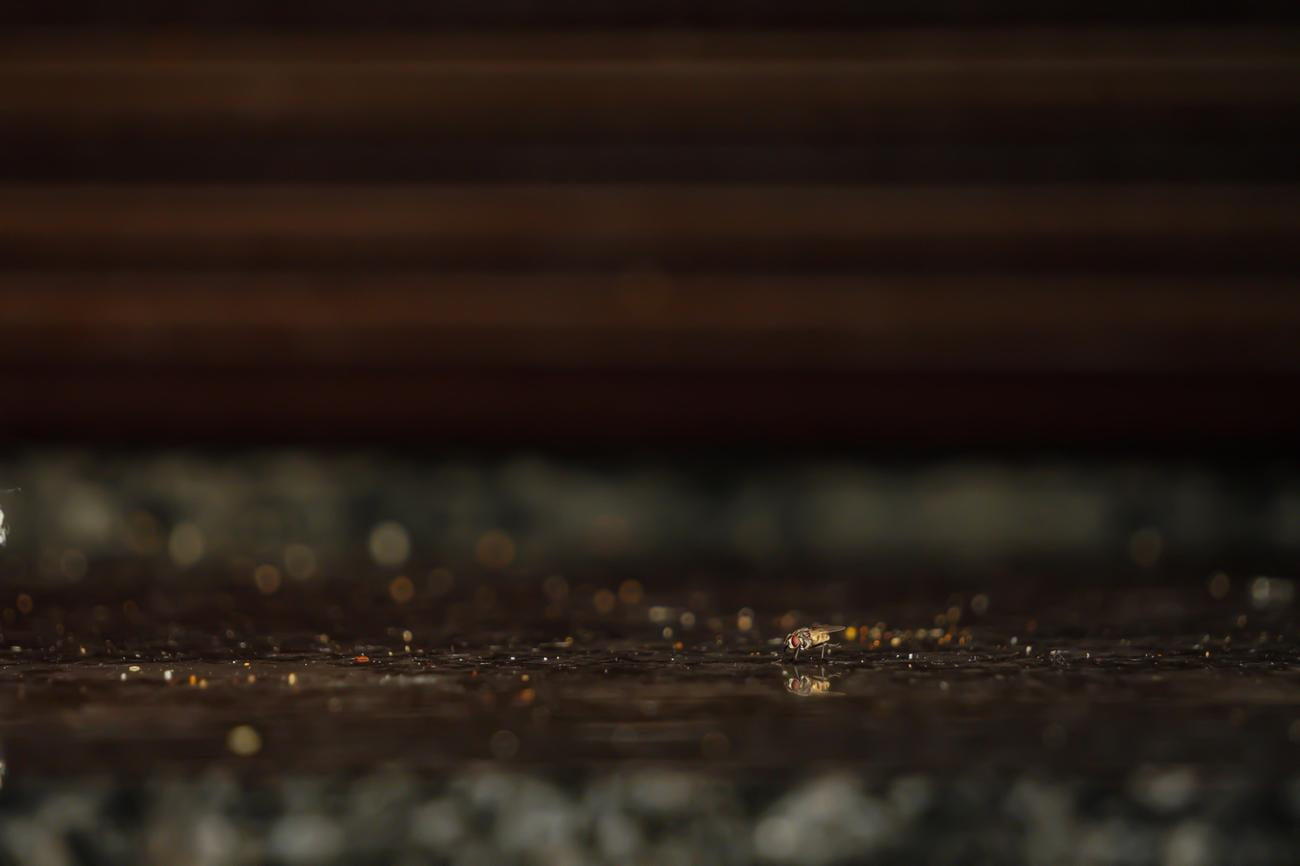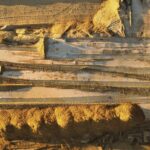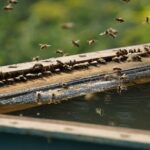Are you ready to delve into the mysterious world of termites? Brace yourself for a riveting journey as we unveil the secrets of these tiny yet formidable creatures. In this comprehensive fact sheet, we will expose the hidden truths about termites and their remarkable biology, relentless social structure, and the havoc they can wreak on our homes and structures. As a seasoned entomologist with a deep understanding of insect behavior and ecological impact, I am thrilled to guide you through the intricacies of termite prevention, treatment options, and the vital importance of termite control in safeguarding the integrity of our living spaces. So, prepare yourself to be amazed and informed as we embark on this enlightening exploration of the termite realm.

Termite Fact Sheet
Termites, the cellulose-eating insects that have been around for over 100 million years, are fascinating creatures with a significant ecological impact. As a seasoned entomologist, I am here to unveil the comprehensive fact sheet about termites, shedding light on their biology, social structure, and the damage they can cause. So, let’s dive into the world of termites and explore their secrets.
Termites: Nature’s Silent Architects
Termites, belonging to the order Isoptera or Dictyoptera, are not closely related to ants, even though they are sometimes referred to as white ants. In fact, termites are more closely related to wood-eating species of cockroaches. They are the hidden architects of nature, playing a critical role in eliminating dead trees and other decaying plant matter.
Did you know? Termites are social insects, living in colonies with their own hierarchical structure. From just two termites to colonies of up to a million individuals, these complex societies raise their young as a group, ensuring their survival and growth.
The Intriguing World of Termites
Termites have an impressive ability to consume cellulose non-stop, surpassing the total weight of all humans combined. Their voracious appetite and constant feeding habits make them remarkable creatures in the insect world. But what else sets these creatures apart?
Termites have reproductive forms that possess pairs of wings. Interestingly, the front set of wings on a reproductive termite is similar in size and shape to the hind set. These wings enable them to swarm and start new colonies, perpetuating their species.
Important to note: Termite colonies can vary in size, ranging from a few dozen to a few thousand individuals. Establishing effective prevention measures and using appropriate termite treatments is vital to prevent extensive damage.
The Economic Impact of Termites
As fascinating as termites are, their impact on homes and structures can be devastating. Annually, termites cause billions of dollars in structural damage worldwide, leading property owners to spend billions more on termite treatments. Ignoring the threat of termites can result in costly repairs and compromised structural integrity.
Remember: Identifying and controlling termites through vigilant prevention measures and the proper use of termite treatments is essential. By doing so, you can protect your property and avoid significant financial loss.
Termite Management: Prevention and Treatment
To protect your home from termite infestations, it is crucial to implement effective prevention strategies. Here are a few key steps to keep termites at bay:
Remove Wood and Debris: Clear away any wood, including dead trees, stumps, and lumber piles, from the vicinity of your property to eliminate termite attractants.
Maintain Proper Ventilation: Ensure good airflow in crawl spaces and attics to reduce moisture levels, as termites thrive in damp environments.
Address Water Leaks: Promptly repair any plumbing leaks or moisture issues in and around your home, as excess moisture provides an ideal breeding ground for termites.
Use Pressure-Treated Wood: When building or renovating, opt for pressure-treated wood, which is infused with chemicals that deter termite infestations.
Quick Tip: Regularly inspect your property for signs of termite activity, such as mud tubes, discarded wings, or damaged wood. Early detection is key in preventing extensive damage.
The Importance of Termite Control
Preserving the integrity of our homes and structures is crucial for both financial and safety reasons. Termite control plays a pivotal role in protecting our properties from the destructive powers of these silent invaders. By investing in termite prevention measures and staying vigilant, we can safeguard our homes and avoid significant expenses in the long run.
In conclusion, termites are remarkable creatures with a rich history and significant ecological impact. Understanding their biology, social structure, and the damage they can cause is vital for effective termite management. By adopting preventive measures, swiftly addressing any signs of infestation, and relying on professional termite treatments when necessary, we can ensure the longevity and structural integrity of our homes. Remember, protecting your home from termites is an investment in the future.
Termites may be small insects, but their impact on the world is truly fascinating. Did you know that termites are responsible for building massive mounds that can reach up to 30 feet tall? If you’re curious to learn more intriguing facts about these tiny creatures, check out our article on 10 fun facts about termites. From their incredible ability to digest wood to their complex social structure, you’ll be amazed at what you discover. So don’t miss out on this captivating read and click here to explore the world of termites: 10 fun facts about termites.
Termite Fact Sheet
Did you know that termites have intricate societies, much like humans? These tiny insects live and work together in highly organized colonies, each with their own roles and responsibilities. From the workers who tirelessly build and maintain the nest, to the soldiers who protect the colony from threats, termites truly exhibit remarkable capabilities. Interested in learning more about these fascinating creatures and their complex societies? Check out our article on the intricate termite societies to dive deeper into their world.
But it’s not just their social structure that makes termites so intriguing. These insects also play a vital role in the environment. Termites are often referred to as “ecosystem engineers” due to their ability to modify their surroundings. Their feeding habits and construction of intricate tunnels can greatly affect the soil and vegetation around them. Curious about the ecological importance of termites? Our article on the ecological importance of termites explores the various ways in which these tiny insects shape their ecosystems.
So, if you’re captivated by the mysterious and awe-inspiring world of termites, take a moment to appreciate their fascinating abilities. From their intricate societies to their ecological significance, termites truly are one of nature’s wonders. Check out our article on the remarkable termite capabilities to discover more about these incredible insects and their noteworthy skills.
Remember, each click takes you deeper into the realm of termites, revealing their secrets and showcasing their amazing feats. Don’t miss out on this opportunity to expand your knowledge and marvel at the wonders of nature!
Termite Tunnels: Unveiling the Fascinating and Destructive World Underground
[youtube v=”BLqmpV5cvq8″]
Did you ever wonder how those mysterious lines of dirt appear on walls seemingly out of nowhere? Well, prepare to be amazed by the ingenuity and destructive power of one of the most fascinating insects on the planet – the Subterranean termite. These tiny creatures create intricate tunnels that serve as highways from the ground to the wood they feast upon. As we delve into the world of these termites, we will uncover their stunning building techniques, their undeniable impact on structures, and the critical need for effective prevention strategies.
The Marvels of Termite Engineering
When you stumble upon that line of dirt gracing your wall, take a moment to appreciate the incredible engineering behind it. The termites, living in colonies that mirror our own social structures, construct these tunnels as a means of survival. Their hierarchical organization ensures a well-coordinated effort in munching on cellulose-based materials, such as wood. Termites are not ants, as some might think, but rather they are closely related to the wood-eating species of cockroaches. With their expert architectural skills, termite tunnels serve two vital purposes – access to food and protection for their colony.
A Mixture of Saliva and Determination
As we break open one of these termite tunnels, a remarkable scene unfolds before our eyes. The termites utilize a combination of their saliva and dirt to construct these passageways. They meticulously deposit tiny globules of dirt, skillfully mixed with saliva, at the end of the tunnel, creating an impermeable seal. Within minutes, the dark brown dirt transforms into a solid barrier, safeguarding the termites and their feast from unwanted intruders. It is through this intricate process that termites exhibit their profound ability to adapt and rebuild.
“The termites’ construction proficiency is unparalleled as they swiftly rebuild their tunnels using a mixture of dirt and saliva, solidifying it into a defensive fortress.”
Termites: Nature’s Recyclers
Despite their destructive nature, termites play a crucial role in our ecosystem. These cellulose-eating insects serve as nature’s recyclers, breaking down dead trees and decaying plant matter. This vital function enhances nutrient cycling and aids in the continuation of life in their habitat. Through their relentless feasting on wood, termites eliminate potential threats posed by fallen trees and contribute to maintaining a healthy balance in our environment.
The Enigmatic Swarmers
Let’s delve into the fascinating world of termite reproduction. These elusive insects possess reproductive forms with pairs of wings, enabling them to embark on swarming journeys in search of suitable locations to establish new colonies. Ranging from a few dozen to a few thousand individuals, termite colonies are a force to be reckoned with. However, it is precisely this ability to swarm and multiply that leads to the immense damage caused by termites. Their exponential growth poses a significant threat to structures worldwide.
“The reproductive prowess of termites leaves no room for complacency. Vigilance is key to protecting your property from potential infestations.”
Arm Yourself with Prevention Strategies
To combat these destructive pests, effective prevention strategies are essential. Implementing proactive measures can save homeowners and property owners from incurring substantial expenses down the line. First and foremost, removing wood and debris around structures is crucial, as it eliminates potential nesting sites. Maintaining proper ventilation and addressing water leaks prevents the creation of damp environments that termites find enticing. Additionally, opting for pressure-treated wood acts as a powerful deterrent against termite infestations.
“Investing in termite prevention measures is not merely a choice, but a responsibility in safeguarding the integrity of homes and structures.”
Vigilance: The Key to Protection
Regular inspections for signs of termite activity are of utmost importance for early detection, allowing for swift action when necessary. Being proactive and observant can make all the difference in preventing extensive structural damage. By being vigilant, homeowners and property owners can stay one step ahead of these relentless pests, securing the longevity of their investments.
The Unseen Architects
Termites may be small, but their impact should not be underestimated. The marvel of their tunnel-building techniques and their ability to devour cellulose with astonishing speed are undeniable. Proper understanding, effective prevention, and timely action are instrumental in preserving the integrity of our buildings and structures. By respecting the termites’ natural behavior and adopting preventive measures, we can ensure a harmonious coexistence with these unseen architects of the underground.

FAQ
How long have termites been around?
Termites have been around for over 100 million years and are closely related to cockroaches.
Do termites cause any damage?
Yes, termites cause billions of dollars in structural damage every year, leading property owners to spend billions on termite treatments.
How large can termite colonies be?
Termite colonies can vary in size, ranging from just two termites to a few hundred individuals. Some colonies can contain anywhere from 60,000 to 1 million individuals.
Are termites related to ants?
Termites are sometimes referred to as white ants, although they are not closely related to ants. They are actually more closely related to wood-eating species of cockroaches.
What is the role of termites in nature?
Termites play an important role in eliminating dead and dying tree matter and other plants. They contribute to the decomposition process and help to recycle organic matter in ecosystems.
- Unlock Filipino Culture: A Deep Dive into Traditions and Practices - April 23, 2025
- Unlock Spanish Culture: Insights & Opportunities Now - April 23, 2025
- White Spirit Uses & Substitutes: A Deep Dive for Pros & DIYers - April 23, 2025
















